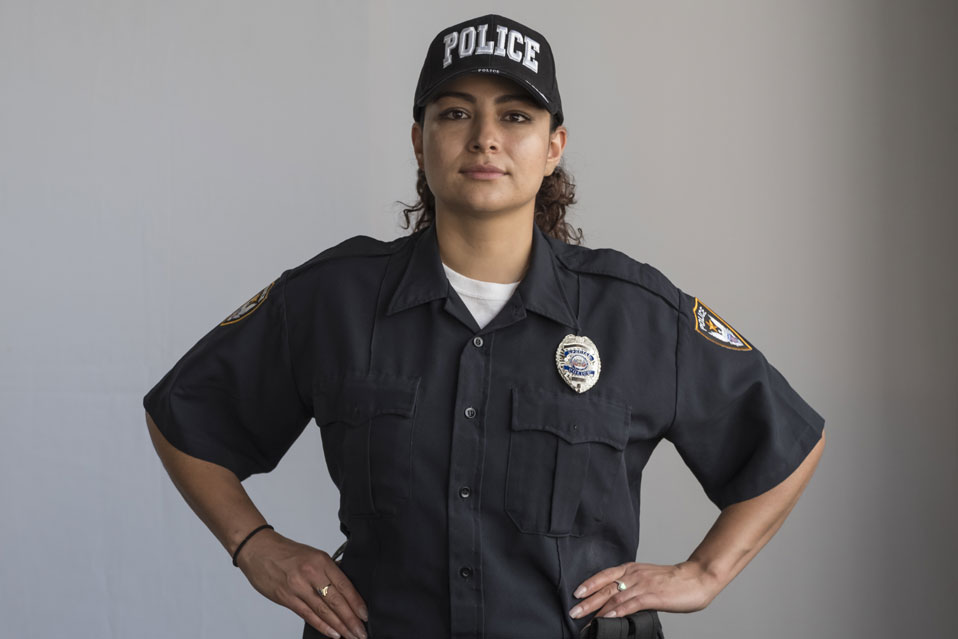Disclaimer: The information on our website is provided for general information purposes only. We make no representations or warranties of any kind, express or implied, about the completeness, accuracy, reliability, suitability or availability with respect to the website or the information contained on our website for any purpose. Any reliance on such information is therefore strictly at your own risk and we are not liable for any damages or losses arising out of or resulting from your reliance on any information contained on our website.
A bailiff is a law enforcement officer specifically trained to maintain a safe environment to ensure a court case runs smoothly. Not only do they provide security, they may pass evidence to the appropriate person in court and escort those involved in the court case to and from the courtroom. Watch a video to learn what a bailiff does:
How to Become a Bailiff
Step 1: Meet the Minimum Requirements
You’ll need to research your state’s minimum requirements at this time to ensure you follow the right track to become a bailiff. You’ll need to earn your high school diploma or GED and then meet the age requirements for your state. The age requirement can range from 18-21 years of age. You’ll also be required to pass a background check and drug screening. Since bailiffs ensure the safety and order of a courtroom, you’ll also need to pass a physical test as well. From here, training requirements by state can vary.
Step 2: Take College Courses
States may have different requirements of education, but it is advised that you take some college courses in criminal justice or a related field. If your state requires you to attend a police academy, these courses can also strengthen your application so you are accepted into the program.
Step 3: Attend a Police Academy
At a police academy, you’ll learn self-defense, institutional policies, regulations, operations, and security procedures. You’ll have to take various physical tests and exams throughout your time at the academy. To find out more information on your state’s police academy, visit the International Association of Directors
of Law Enforcement Standards and Training website (link opens in a new tab).
Step 3: Learn your Roles and Responsibilities
You will need to get trained to learn about the roles and responsibilities you’ll have as a bailiff in a courtroom. Along with learning how to provide court security and the tasks you’ll need to perform before, during, and after a hearing, you will also analyze real-life scenarios to discover what to do and not to do in a given situation.
Job Description of a Bailiff

The duties of a bailiff may vary according to the courtroom. However they typically enforce order and security in the court to protect the legal process and its security and integrity. They must be highly observant and alert as well to also ensure witnesses and attorneys cannot influence juries outside of the courtroom.
If necessary, bailiffs will isolate the juries from the public, especially when there is a very publicized trail. They also work to safely and efficiently escort the jury, witnesses, judges, and prisoners to and from the courtroom. They may need to handle evidence in the courtroom and distribute that evidence to the appropriate person. In some cases, bailiffs search people before entering a courtroom to increase the safety of the court.
Bailiff Career Video Transcript
Maintaining a balance of the 3 “Cs”: care, custody, and control. With the incarcerated, is up to correctional officers and bailiffs. They keep prisoners safe and contained. Correctional officers oversee people who have been imprisoned, enforce the facility’s rules and regulations, and monitor the whereabouts of inmates at all times. They search inmates and cells for weapons and drugs, and may need to restrain inmates for safety or to escort them. Correctional officers settle disputes and enforce discipline, but also may schedule work assignments and other activities. Daily logs and reports detailing every shift are required.
Bailiffs are law enforcement officers who maintain safety and order in courtrooms. They guard juries, deliver court documents, and enforce courtroom rules. Most correctional officers work for government correctional institutions some modern and well-maintained, and some old, hot, and overcrowded. Bailiffs work in courtrooms.
Working in a correctional institution can be stressful and dangerous. Injuries and illness rates are some of the highest of all careers. Officers work in shifts 24/7, including weekends and holidays. In addition to a high school education, officers train in a special academy, and may also receive on-the-job training at a facility. Federal prisons require a bachelor’s degree or related work experience. Candidates must not have a felony conviction.
Article Citations
Bureau of Labor Statistics, U.S. Department of Labor, Occupational Outlook Handbook, Correctional Officers and Bailiffs.
National Center for O*NET Development. 33-3011.00. O*NET OnLine. This page includes information from O*NET OnLine by the U.S. Department of Labor, Employment and Training Administration (USDOL/ETA). Used under the CC BY 4.0 license. O*NET® is a trademark of USDOL/ETA. RethinkOldSchool, Inc. has modified all or some of this information. USDOL/ETA has not approved, endorsed, or tested these modifications.
The career video is in the public domain from the U. S. Department of Labor, Employment and Training Administration.

